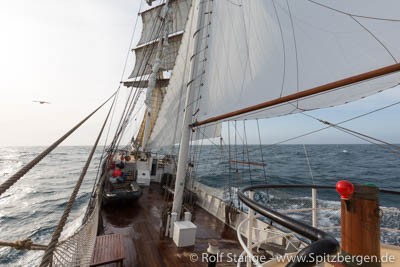-
current
recommendations- Liefdefjord
New page dedicated to one of Spitsbergen's most beautiful fjords. Background information and many photos.
- New Spitsbergen guidebook
The new edition of my Spitsbergen guidebook is out and available now!
- Liefdefjord
New page dedicated to one of Spitsbergen's most beautiful fjords. Background information and many photos.
Page Structure
-
Spitsbergen-News
- Select Month
- May 2025
- April 2025
- March 2025
- February 2025
- January 2025
- December 2024
- November 2024
- October 2024
- September 2024
- August 2024
- July 2024
- June 2024
- May 2024
- April 2024
- March 2024
- February 2024
- January 2024
- December 2023
- November 2023
- October 2023
- September 2023
- August 2023
- July 2023
- June 2023
- May 2023
- April 2023
- March 2023
- February 2023
- January 2023
- December 2022
- November 2022
- October 2022
- September 2022
- August 2022
- July 2022
- June 2022
- May 2022
- April 2022
- March 2022
- February 2022
- January 2022
- December 2021
- November 2021
- October 2021
- September 2021
- August 2021
- July 2021
- June 2021
- May 2021
- April 2021
- March 2021
- February 2021
- January 2021
- December 2020
- November 2020
- October 2020
- September 2020
- August 2020
- July 2020
- June 2020
- May 2020
- April 2020
- March 2020
- February 2020
- January 2020
- December 2019
- November 2019
- October 2019
- September 2019
- August 2019
- July 2019
- June 2019
- May 2019
- April 2019
- March 2019
- February 2019
- January 2019
- December 2018
- November 2018
- October 2018
- September 2018
- August 2018
- July 2018
- June 2018
- May 2018
- April 2018
- March 2018
- February 2018
- January 2018
- December 2017
- November 2017
- October 2017
- September 2017
- August 2017
- July 2017
- June 2017
- May 2017
- April 2017
- March 2017
- February 2017
- January 2017
- December 2016
- November 2016
- October 2016
- September 2016
- August 2016
- July 2016
- June 2016
- May 2016
- April 2016
- March 2016
- February 2016
- January 2016
- December 2015
- November 2015
- October 2015
- September 2015
- August 2015
- July 2015
- June 2015
- May 2015
- April 2015
- March 2015
- February 2015
- January 2015
- December 2014
- November 2014
- October 2014
- September 2014
- August 2014
- July 2014
- June 2014
- May 2014
- April 2014
- March 2014
- February 2014
- January 2014
- December 2013
- November 2013
- October 2013
- September 2013
- August 2013
- July 2013
- June 2013
- May 2013
- April 2013
- March 2013
- February 2013
- January 2013
- December 2012
- November 2012
- October 2012
- September 2012
- August 2012
- July 2012
- June 2012
- May 2012
- April 2012
- March 2012
- February 2012
- January 2012
- December 2011
- November 2011
- October 2011
- September 2011
- August 2011
- May 2011
- April 2011
- March 2011
- February 2011
- January 2011
- December 2010
- November 2010
- September 2010
- August 2010
- July 2010
- June 2010
- May 2010
- April 2010
- March 2010
- February 2010
- November 2009
- October 2009
- August 2009
- July 2009
- June 2009
- May 2009
- April 2009
- March 2009
- February 2009
- January 2009
- December 2008
- November 2008
- October 2008
- August 2008
- July 2008
- June 2008
- May 2008
- April 2008
- March 2008
- February 2008
- April 2000
- Select Month
-
weather information
-
Newsletter

| Guidebook: Spitsbergen-Svalbard |
Home → July, 2017
Monthly Archives: July 2017 − News
Polar row: In a rowboat to Spitsbergen
If you want to travel to Spitsbergen in an environmentally friendly way, perhaps you should join these five men: the Norwegian Tor Wigum, the Welshman Jeff Willis, the American Carlo Facchino, the Indian Roy Tathagata and the Icelandic Fiann Paul want to row from Tromsø to Spitsbergen today!
Fiann Paul is the leader of this expedition named “Polar Row”. There is no doubt about his qualification. He has already crossed the Atlantic Ocean, the Pacific Ocean and the Indian Ocean in record time in a rowing boat. Fiann Paul has prepared the expedition for one year. Since the oarsmen can not expect any help from sea currents, they will have to row continuously 24 hours a day. In doing so, the team changes with the tasks: Some will row for two hours. During this time, the others may eat, sleep or inspect the boats or their own injuries.
It is planned to travel the almost 1000 kilometers long route in 9 to 13 days. The expedition will arrive in Longyearbyen at the latest in the beginning of August.
Plenty of equipment and strong nerves
Expedition leader Fiann Paul doesn’t worry too much about the physical effort or the cold. All participants are physically and mentally very strong, he told the newspaper Svalbardposten. An accompanying boat is not included, but safety equipment such as survival suits, rescue vests, a rescue boat and a satellite phone. Only if the equipment fails or there are problems with the boat, it could be difficult.
If the expedition succeeds, it should be the first registered rowing tour of this kind. However, there are stories of people who have traveled the route between Tromsø and Spitsbergen (or a part of it) in a rowing boat due to a shipwreck.
The Barents Sea, also called the devil’s dance floor, on a sailing ship – that is one thing. It is another thing on a rowing boat.
Rowing for a good cause
The expedition also pursues two further goals: the University of Cambridge will investigate how the extreme tour affects the participants psyche. In addition, 20,000 British pounds (around € 22,600) are to be collected via a crowdfunding platform. With this money a school will be built in the Himalayan region in 2018.
And Longyearbyen is not yet the end of the expedition. After a few days break, they will continue to the northernmost city of Iceland Siglufjörður – about 2000 km, also in the rowing boat.
To the expeditions homepage.
Sources: Svalbardposten, Polarrow-Homepage
Svalbard reindeer is doing well
The Norwegian Polar Institute counted 1374 Svalbard reindeer in the Adventdalen around Longyearbyen this year. Many calves were observed and only a few dead reindeer found. This is a trend that has been observed for years: The reindeer population has been growing slightly in this region for years.
Well-fed Svalbard reindeer, an endemic subspecies of the reindeer
The reindeer have been counted since 1979 on Spitsbergen by the Norwegian Polar Institute and the Sysselmannen – the Governor of Spitsbergen. At that time only 457 reindeer were counted in Adventdalen. It is estimated that a total of 10.000 to 11.000 reindeer live on Spitsbergen.
Climate change has variuos effects
Up to now, it has been assumed that reindeer suffer from the increasing rain. In winter, the rain forms a layer of ice on the ground and the reindeer have more difficulties approaching the lichens and grasses. Higher temperatures in the autumn seem to compensate for the deterioration in the living conditions for reindeer. Last year, high temperatures in October and November made it possible for the reindeer to build fat reserves so they could survive the cold winter.
The situation is a bit different for reindeer north of Spitsbergen: on the Brøggerhalvøya peninsula/ Kongsfjorden, the stock remains stable. Here, the fjords have remained free of ice in recent years, so that the Reindeer can hardly migrate to avoid bad feeding conditions.
Global warming could therefore have different effects in the different climate zones on Spitsbergen.
Less dead reindeer in the Adventdalen could mean bad news for another species: The polar fox feeds from reindeer carcasses. Less dead reindeer means, he must switch to other food sources.
Sometimes curious: Svalbard reindeer
More articles about the Svalbard reindeer
Source: Nordlys, Svalbardposten
News-Listing live generated at 2025/May/04 at 03:24:56 Uhr (GMT+1)































